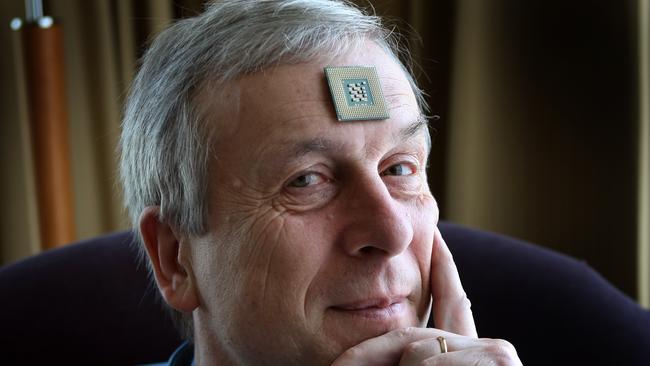Byron Wake becomes a cyborg teenager with microchip implant
Byron Wake, 15, has turned himself into a cyborg — part-human, part machine.

The parents of a teenager who has become Britain’s youngest “cyborg” have admitted that they are still not exactly sure about it.
Byron Wake, 15, used a hypodermic syringe to insert a microchip under the skin on his hand. The chip enables him to unlock his mobile phone and operate some Bluetooth devices with a wave of his hand.
He is now a cyborg: part-human, part machine.
Byron is one of an estimated 10,000 people worldwide to have had the chip implanted in the same way that cats and dogs are microchipped. The chip is the size of a grain of rice and is encased in “bio-safe” glass.
Byron, from Martock in Somerset, ordered it from the US and ignored advice to have it inserted by a doctor.
He says: “I didn’t tell my parents until three days later. They took it better than expected because they had already told me not to do it. When I did tell them I’d done it, they just went with it. Afterwards I had it checked out at the doctor, who said it was fine and they were happy. My grandpa is a surgeon and he said that he was proud. My mum wasn’t expecting that at all.”
Byron says that there has been no problems with the chip so far, apart from a slight ache after injecting it. His mother, Lilian, 37, says: “We’re still not entirely certain about it.”
The xNT chip emits a low-power radio signal that can perform simple functions such as unlocking a mobile or opening a door. Employees at Epicenter, an office complex in Sweden, can have the chip implanted, allowing them to use a photocopier, open security doors and even pay for their lunch with their hands.
Byron will be reviewing the chip for Dangerous Things, a US company that raised the finance to produce them through the crowd-funding website Indiegogo.
Kevin Warwick, who became the world’s first cyborg when he had a chip implanted in 1998, has given Byron his backing. The professor, who is deputy vice-chancellor of research at Coventry University, says there are no risks to microchip implants.
“Quite a few people have them, but he may well be the youngest,” he says. “There are all sorts of possibilities for it in the future. One is as an extra piece of information for a passport so that people could be dealt with more quickly.
“To fly the flag for the UK on this futuristic technology, the first trial was in the UK, and it is good to see this young man’s interest.”
Byron has been using the chip’s ability to unlock his phone automatically and to play music from his speakers using their Bluetooth function. He is also able to send business cards by touching his hand on to other Android users’ phones, which automatically transfers his details.
“I’m trying to get it to unlock my computer, which is a bit harder because you have to know some coding,” Byron says.
He says the stunt has been well received by his friends.
“None of them has said a bad word about it. They all know I’m crazy. My form teacher thinks it’s innovative.”
The Times


